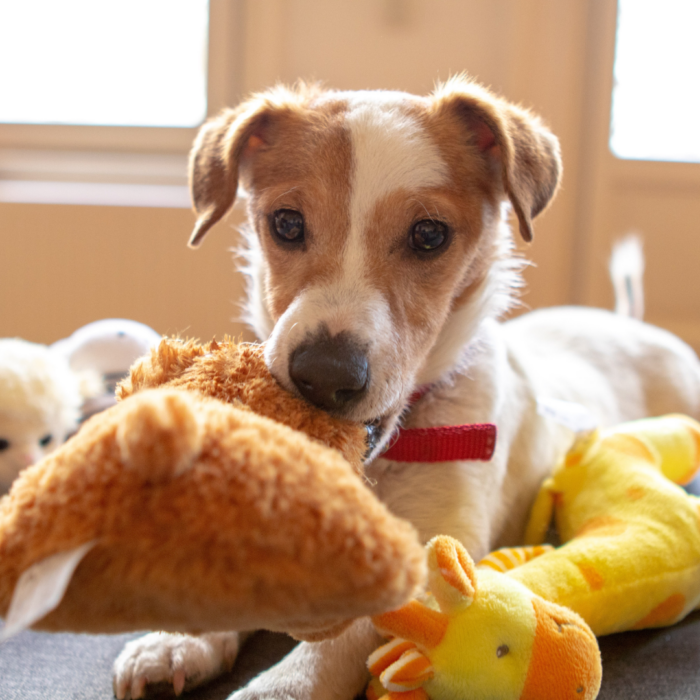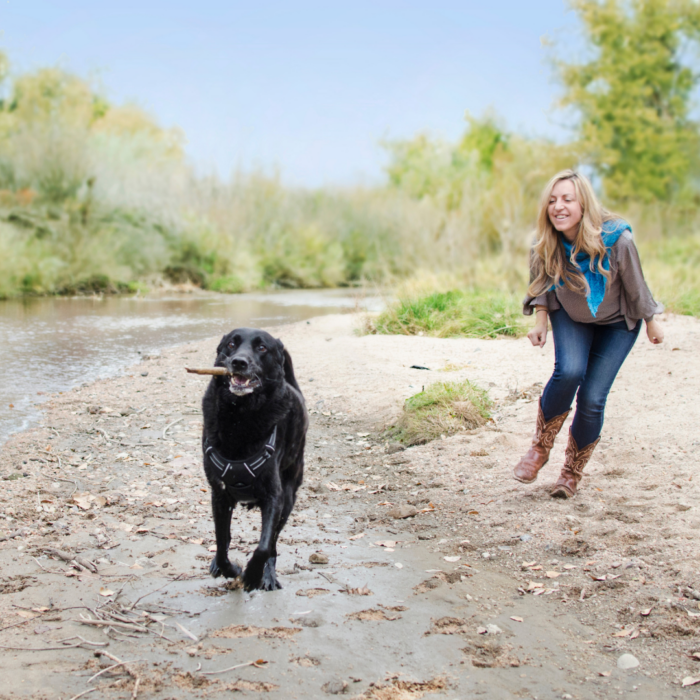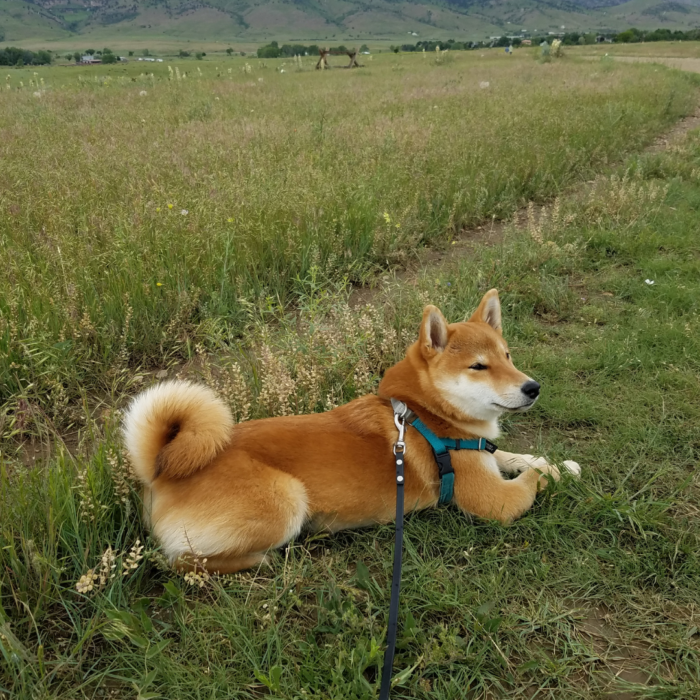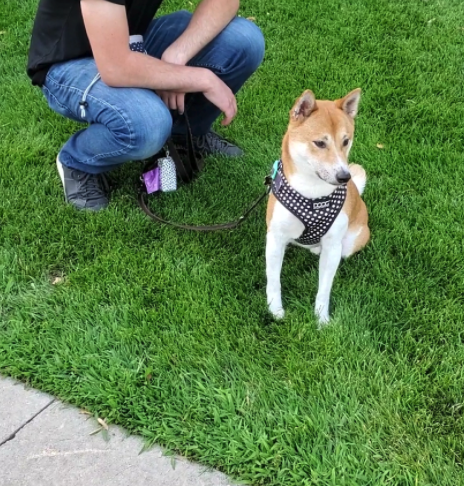In episode 39 of the Paws & Reward Podcast, Lisa Mullinax and I will be talking about how to get through the teenage years with our dogs. Adolescent dogs can be hard to live with. Behavior changes quickly from snuggly puppy to energetic teen who loves to push the boundaries. Lisa and I give advice about how to handle this challenging stage without creating a bigger problem for the future.
What age is adolescence?
There is some debate about when exactly adolescence starts and ends depending on the literature you look at, but for the sake of this podcast, we are defining it as between the ages of 5 months to 20 or 24 months depending on the dog.
What can we expect from our adolescent dogs?
- Biological, physical, and psychological changes in your adolescent dog.
- Your training process will have ebbs and flows.
- Change is the only constant, so being fluid is ideal.
- External reinforcers will be more important than you.
- Behaviors that you found acceptable or cute when your dog was a small puppy are now unacceptable.
- Common adolescent dog behavior concerns:
- Destructive chewing
- Hard mouthing/rough play
- Marking
- Heat cycle
- Changes in their impulsivity and reactions to their environment
What’s the most common concerning adolescent dog behaviors?
One concerning behavior is destructive chewing. It becomes intense and destructive around 5 months onward. Now that their adult teeth have come in people assume teething is over but the teeth are still settling. Teething pain can still occur in adolescent dogs, especially with molars in the back, which can cause some of the most intense chewing.
They need lots of outlets and lots of things to shred, otherwise, they will find something to shred that may not be desirable. They need to exert this behavior so we should give them an appropriate outlet.

Another concerning behavior is rough mouthing in play, different from exploratory mouthing that a puppy does, where they grab onto your pants or use pressure on your hands/arms during play or when they want your attention.
This is how dogs communicate and play with one another, but can be problematic over time if reinforced. If we are proactive in providing oral outlets, physical exercise, and mental stimulation, it can help prevent the behavior. It keeps us from being reactive to the behavior and accidentally reinforcing it. Often people redirect their adolescent dog onto a toy which indirectly reinforces the behavior and turns it into a game.
Important Tip: Don’t ignore the mouthing because they may resort to mouthing harder and escalating the behavior.

And lastly, a big behavior change during this time is increased impulsivity or reactivity to their environments. This may look like barking, lunging, and pulling on leash.
These behaviors happen for a variety of reasons and depend on the individual dog. Some reasons include curiosity, frustration, and/or fear of the stimulus. Or all 3 emotions at once! Just like humans, dogs can experience a multitude and conflicting emotions in the same experience.
What are some of your favorite tools and training exercises to work on with your adolescent dogs?
- Management strategies
- Decompression walks
- Practicing recall
- Reinforcing all good choices, especially offered check-ins
- Specied-typical enrichment
- Reinforce relaxation and self-guided activities
- Engage, disengage games
- Choosing play partners wisely
- Plenty of quality rest time!!
Heavily reinforce good choices, from checking in during a walk, not reacting to a new person or dog in their environment, loose leash walking, etc. The absence of negative behavior is vital to reinforce constantly during this stage. Do not skimp on reinforcement. Give them ALL the positive feedback.
Management is key. Arrange their environment to reduce bad choices. Change walking paths if there is a need to give them less stimulation. Management can help with your relationship. There will be less frustration, resentment, and anger because the dog is being set up for success. Much like having a toddler’s environment managed, the same must be done for our adolescent dogs.
We should meet the dog where they are instead of imposing our expectations on where you feel they should be.
Why is decompression and rest so important for adolescent dogs?
These dogs have so much energy during this time of their life. A mistake we make is trying to match all activities to that energy level so that we exhaust our dogs. But then we are creating a dog that can never settle unless they are physically exhausted.
We need to focus on the importance of rest.
Teach adolescent dogs low-key activities and self-guided activities. If they need us to always throw the ball or play tug or interact with them then we are setting them up to fail. We must prepare them for the days where we need them to rest and where we cannot physically engage them for hours on end.
An alternative would be to go outside, do a scatter feed, and let them use their nose.
Find a new place to walk and explore, away from people and other dogs, and allow them to move freely in the space. If you don’t trust their recall yet, a long line can be a great tool.
We tend to make dogs fit into a narrow definition of what we want them to be, like walking in a straight line with a loose leash and turning the corner easily without being distracted.
But our dogs need more open-ended activities that involve exploration of their environment in the ways that work best for them. Let them walk how they want, at their pace, allowing for sniffing.
Decompression walks, without the need for perfection, are an important outlet.

Taking care of yourself when you have an adolescent dog
- Take breaks.
- It’s okay to be upset – just do it away from your dog!
- Ask for help.
- Use management.
- Simplify your training and enrichment goals.
- Find activities both you and your dog enjoy together.
How can we reframe the adolescent phase?
If you use certain language to describe the adolescent dog phase (juvenile delinquent, terrible teens), then it will define that stage for you in a negative way. It places all the fault on the dog and makes us feel defeated before we even start.
The phrase “Yes, and…” helps reframe this stage with a more positive outlook. We can recognize the challenges and frustrations while also embracing the new opportunities it presents.
“This is an opportunity for me to learn [blank].”
“I’m increasing my capacity for experiencing discomfort.”
“I’m learning a lot more about our needs in this relationship.”
It is hard but it’s an opportunity to become a team. We can be presented with new opportunities for growth.
And, it’s okay to admit that some people will not find this stage enjoyable.
So many people talk about how hard having an adolescent dog can be. It’s like they want you to hold your breath and buckle up, wishing for the dog to age out of this stage in life. As long as you continue to reinforce good behavior, give your dog outlets, and encourage rest for both of you, you’ll come out the other side with a wonderful companion.
Lisa Mullinax Resources:
- Shelter Behavior Solutions
- 4 Paws University
- Management! Better Training, Fewer Headaches
- Seriously, It’s Not Dominance
Other Resources:
- Canine Enrichment and Mental Stimulation Toys
- How Can I Stop my Puppy from Biting Me?
- Setting Your Dog Training Sessions Up for Success

